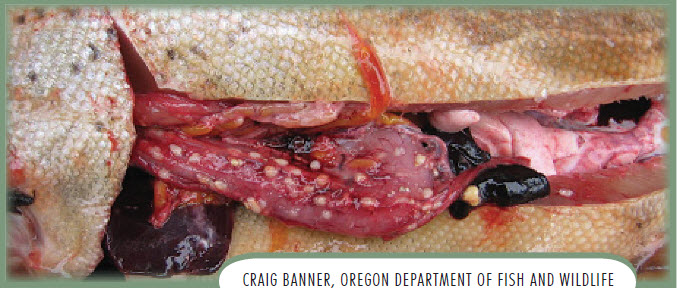Diphyllobothriasis
| Question | Answer |
|---|
| Example |

|
| Can I still use the animal |
Yes - Take Safety Precautions
|
| Commonly infected wildlife |
|
| Is this animal infected |
- Many species of freshwater fish and salmon can be infected
- Affected animals have worms that may be coiled in muscles, or in cysts within internal organs
- Worms vary in length (from 1/8 inch-1/2 inch)
|
| Can I get it |
Yes
- By consuming raw or undercooked fish
- People can develop mature tapeworms in their intestines
|
| How bad can it get |

Medications can kill and remove the worms.
|
| How can I protect myself and others |
- Kill the worms
- Cook fish to 165°F for 5 minutes or
- Freeze at 0°F for 24 hours
|
| Symptoms in humans |
- Most people have no or mild symptoms:
- Fatigue
- Diarrhea
- Dizziness
- Weight loss
- Vomiting
- Itchy anus
- Massive infection may cause:
- Additional symptoms may include:
- Loss of appetite
- Paleness
- Shortness of breath
- Weakness
- Confusion
|
| Is it safe for pets |
- Cook or freeze first
- These worms can survive and grow in dog intestines
|
| What causes it |
- A tapeworm called Diphyllobothrium
- Commonly known as broad fish tapeworm
- It can grow to 30 feet in length in human intestines
|

